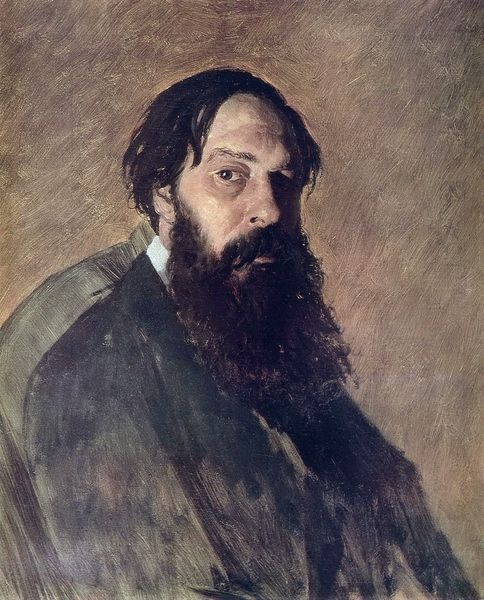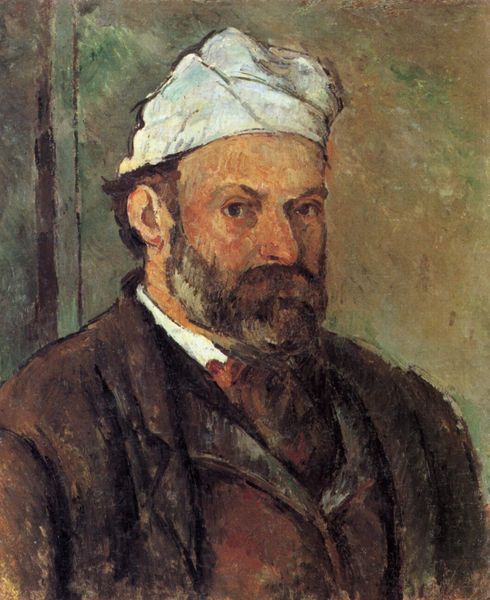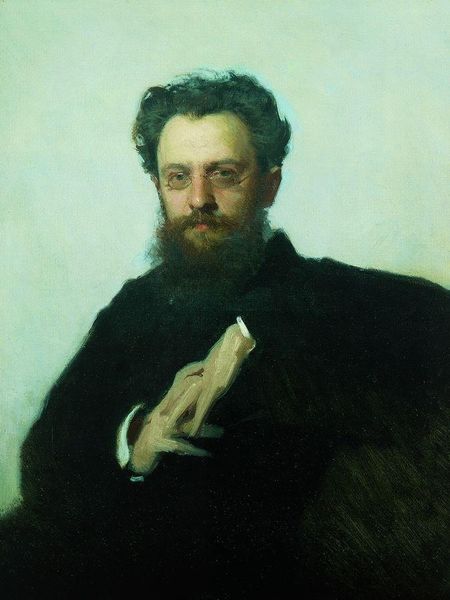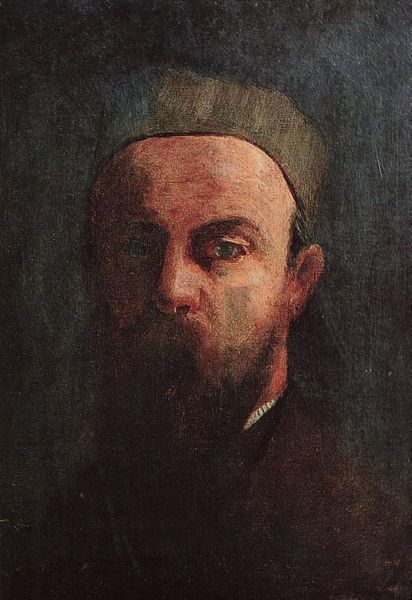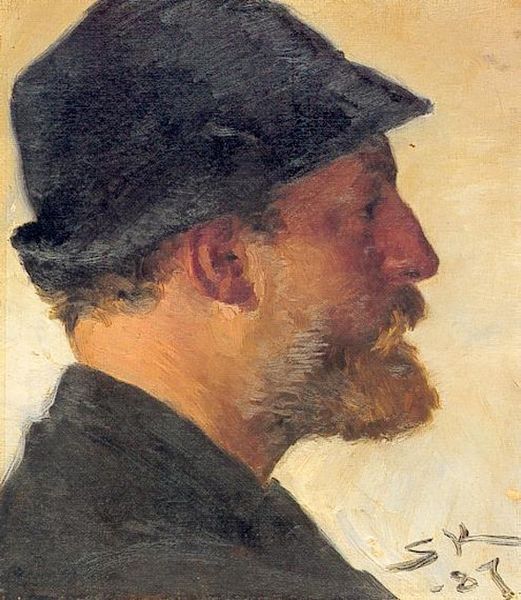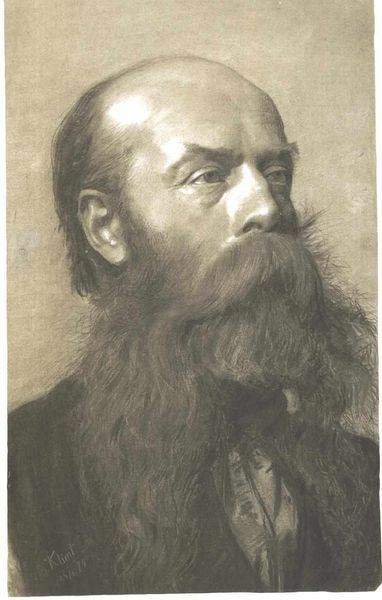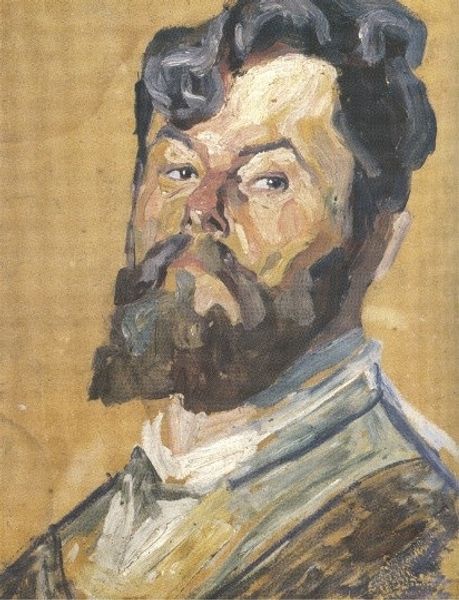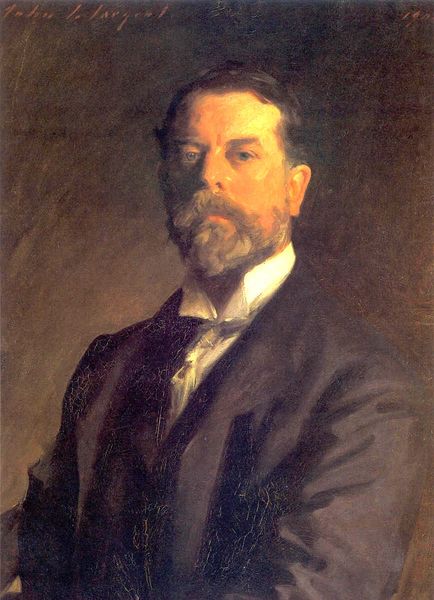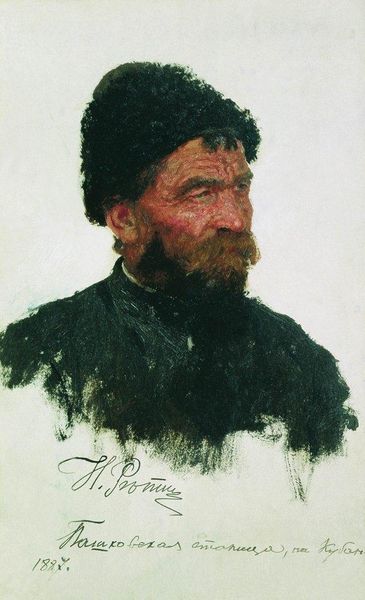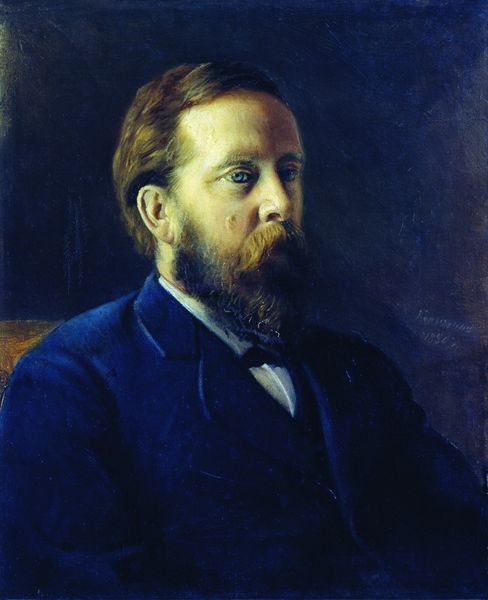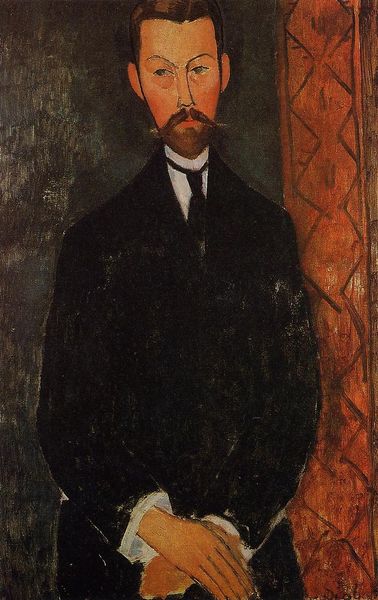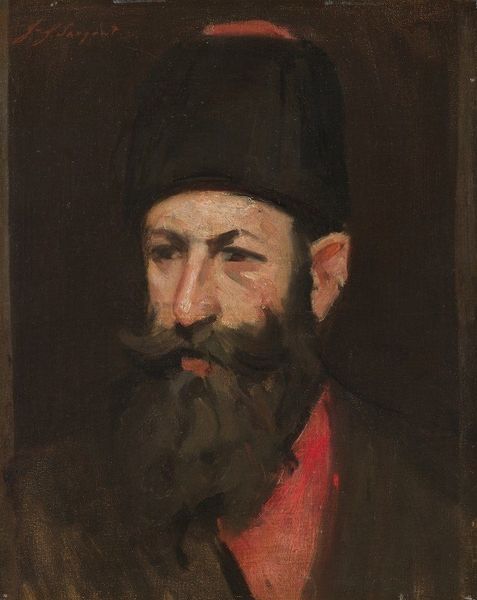
Copyright: Public domain
Curator: This is Theodor Severin Kittelsen's "Self-Portrait," completed in 1891. It’s rendered in oil on canvas, as you can see. Editor: The first thing I notice is the very earth-toned palette, it's rather subdued. There is something almost worn about the whole surface and facture, as if the painting itself is aging before our eyes. Curator: Kittelsen often depicted folklore and the darker aspects of Norwegian culture. Do you think he infused this portrait with some of those symbolic inclinations? The cap, perhaps? Editor: Possibly, but the attire looks contemporary to me for the period. What grabs me is that tangible quality in the oil paints; I can practically feel the texture under my fingers, that mix of pigment and binder, and it begs the question – where did those raw materials come from, and who ground those colors? It makes you think of the labor behind artistic production, and that's just in the material sphere! Curator: That tangible aspect does lead to an undeniable intimacy. The somewhat melancholic gaze feels charged with self-reflection, perhaps even a degree of romantic angst that's often associated with that era. Look at the shadows, how they define a narrative of emotional complexity that goes far beyond straightforward likeness. Editor: Absolutely, but there's also a stark reality present. It's a well-dressed man, clearly. So who made that jacket? How long did it last? How was the textile created? I mean, his appearance indicates access to materials, to markets and tailors. It places him squarely within a network of social production. Curator: He presents himself, as well as anyone can in a self-portrait. It almost seems like an archetype here, beyond the mere representation of a man. It's as if he seeks to embody something greater—the artist as a figure consumed by their own internal world. Editor: Perhaps... though what I find really compelling is this man’s relationship to material culture, to objects that were crafted with particular intent. Oil paints in the 19th century weren't what they are today; what kind of pigments did he use, and from which resources were they drawn? Those paints connect him to a specific economic reality. Curator: It gives us pause, a certain reflective turn back into our own understanding of self and art. Editor: Yes, we think not only of Kittelsen's self, but also the hands involved in creating the material world around him, that eventually comprised the very act of portraiture.
Comments
No comments
Be the first to comment and join the conversation on the ultimate creative platform.
